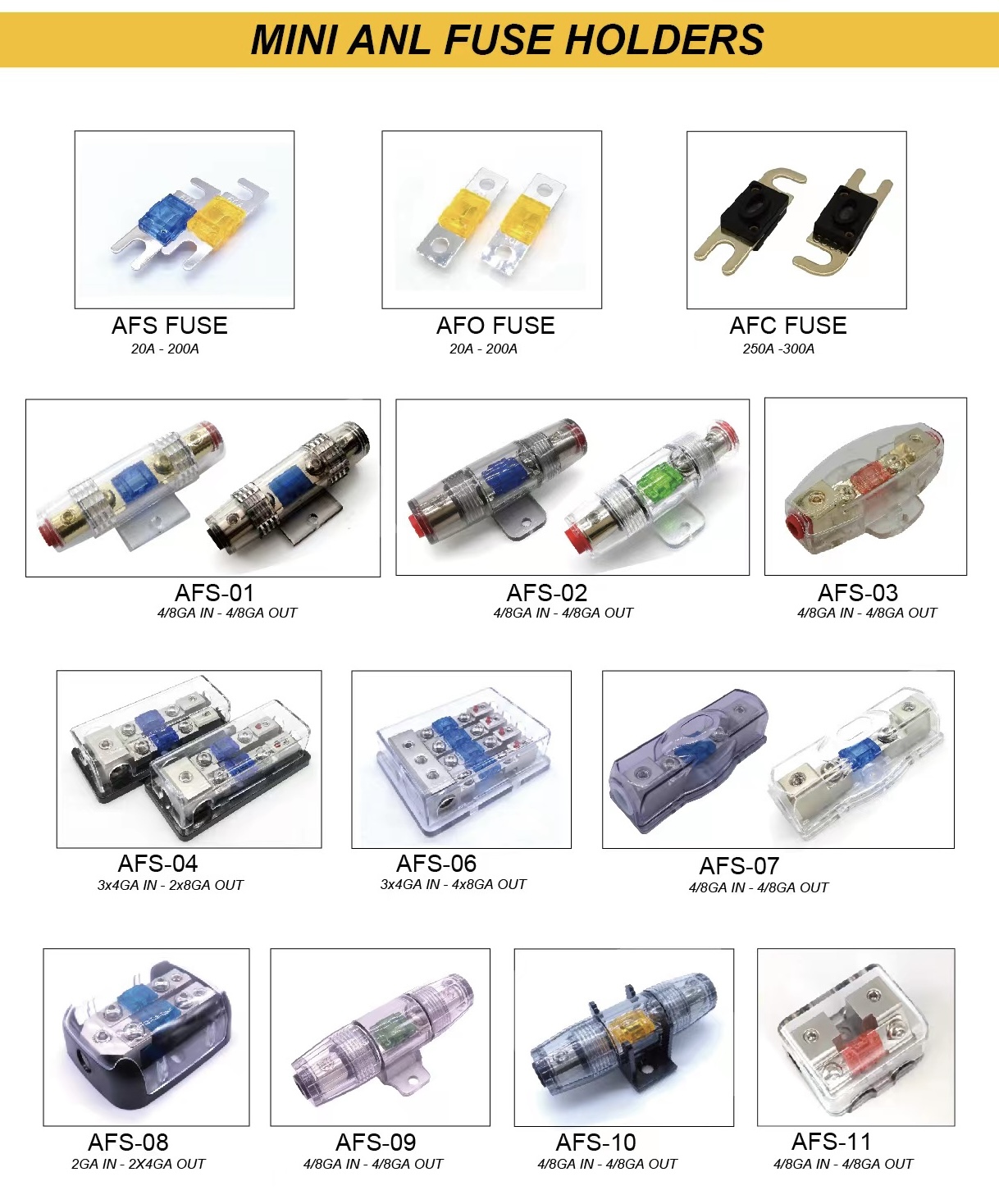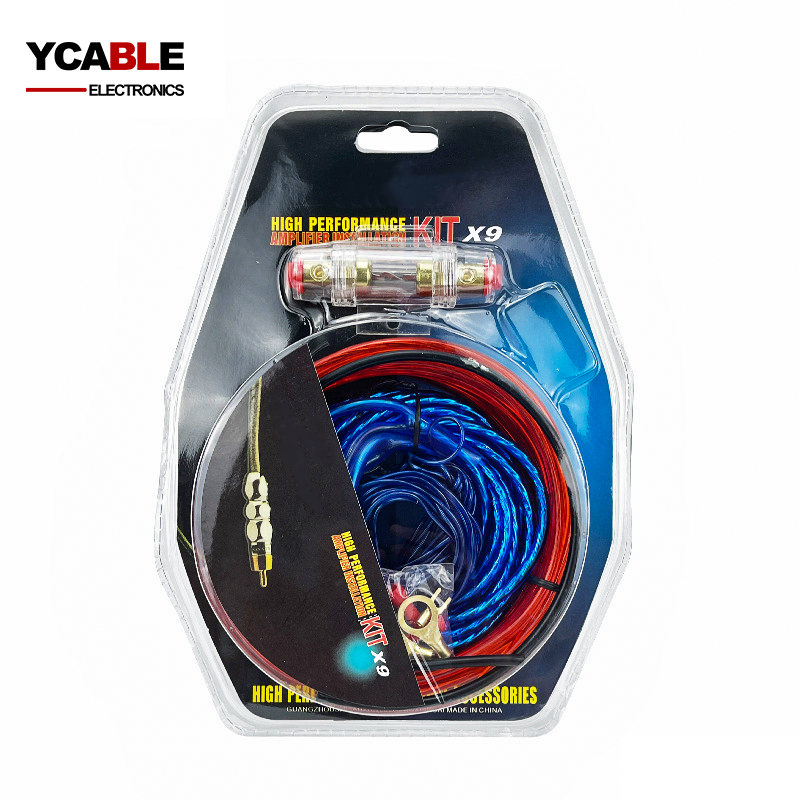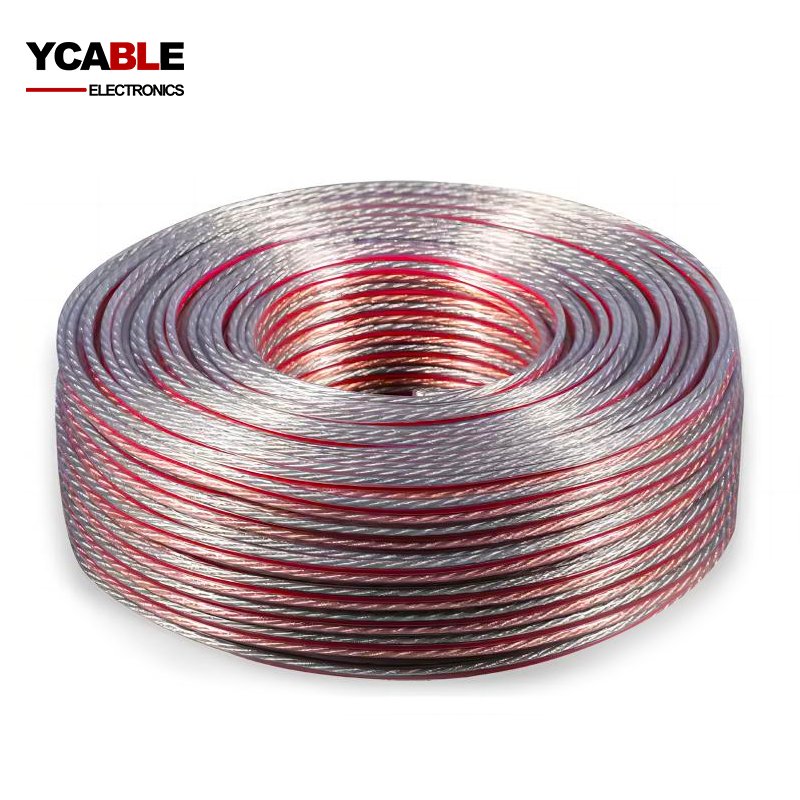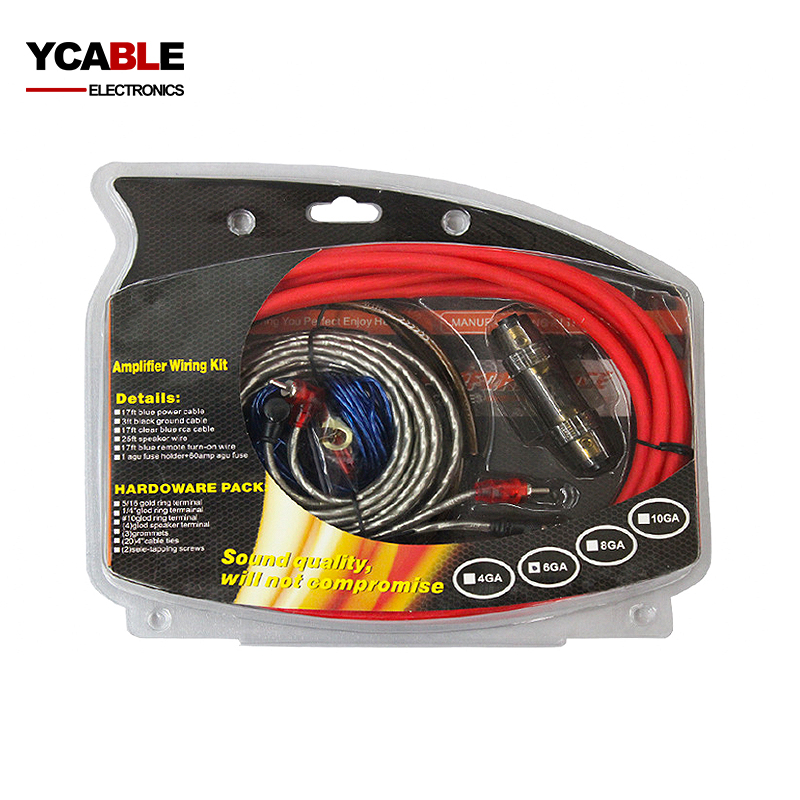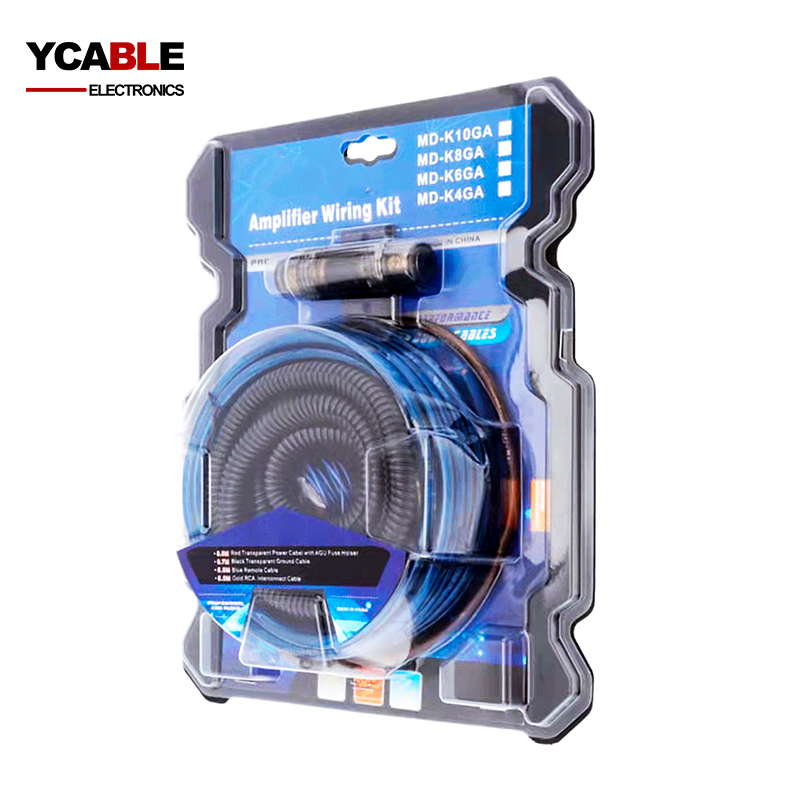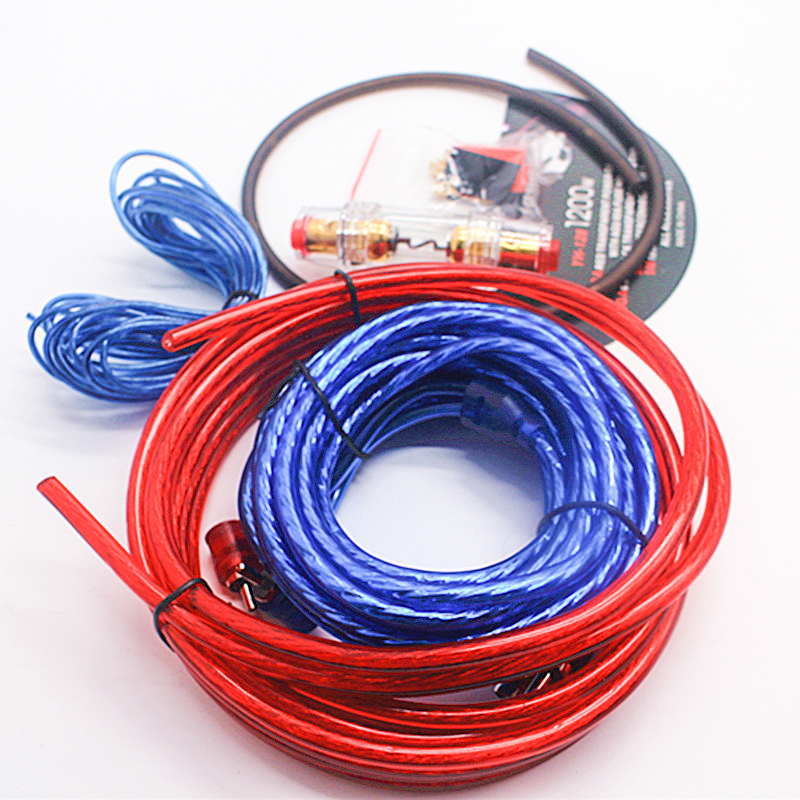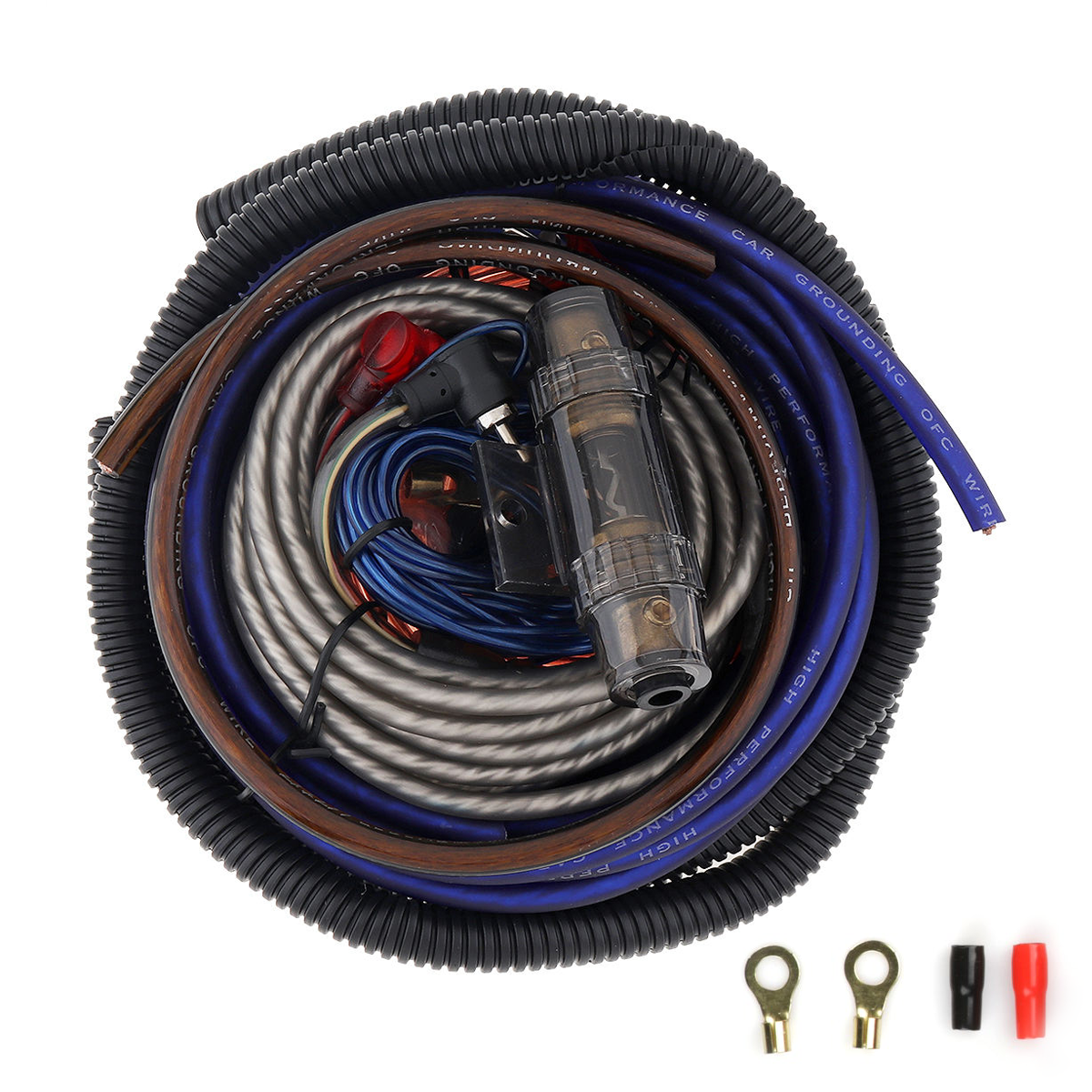10 Gauge Amplifier Wiring Kit
10 Gauge Amplifier Wiring Kit
Item Number:10 Gauge Amplifier Wiring Kit
- 1: Custom length 10 Gauge power cable CCA/Cu
- 2: Custom length 10 Gauge ground cable CCA/Cu
- 3: Custom length twisted RCA cable Cu/CCS
- 4: Custom length 16 Gauge speaker cable Cu/CCA
- 5: Custom length remote cable
- 6: Custom length plastic tube(optional)
- 7: Custom Y audio cable(2 Male to 1 Female / 2 Female to 1 Male)(optional)
- 8: AGU/ANL fuse holder with fuse 60A-200A
- 9: Installation accessories(optional)
Environmental Specifications:
Environmental Space – Non-plenum
Flame Test Method – Custom
Installation Temperature – 0 °C to +90 °C
Operating Temperature – -20 °C to +90 °C
Temperature Rating – 70 °C
General Specifications:
Cable Type
10 Gauge Amplifier Wiring kit
Conductor Material
CCS/Cu/CCA
Insulation Material
PVC/Smoke Transparent PVC/Soft PVC
Conductor Size, singles
10 AWG, 10 Gauge, 10 GA
Conductor Type, singles
Stranded
Characteristics:
- Made of pure copper for better sound quality, and CCA for more affordable prices
- Adopting the pure copper conductor, has low attenuation, low signal loss, and a high transmission rate utilizing.
- The aluminum foil shield and copper braiding shield make it a much stronger anti-interference ability.
- Flexible soft elastic PVC Jacket for Ultimate Wire Flexibility
The car amplifier subwoofer wiring kit is suitable for connecting the playback host to an independent amplifier or connecting the playback host to an active subwoofer. The high-quality cable has a low sound signal loss. When the playback host does not have low-frequency signal output, the problem can be solved by installing a high-to-low device.
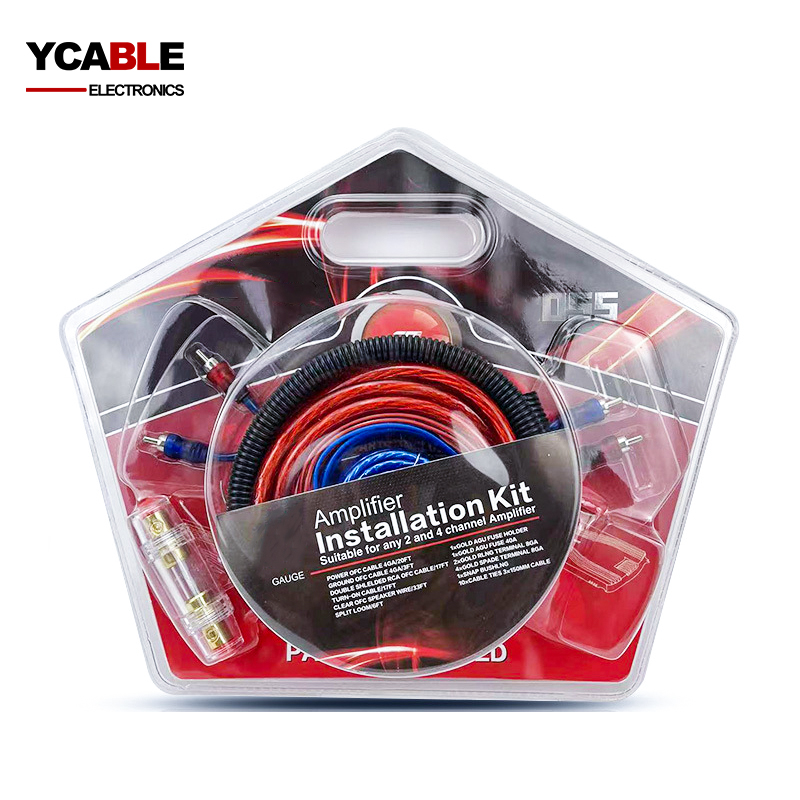
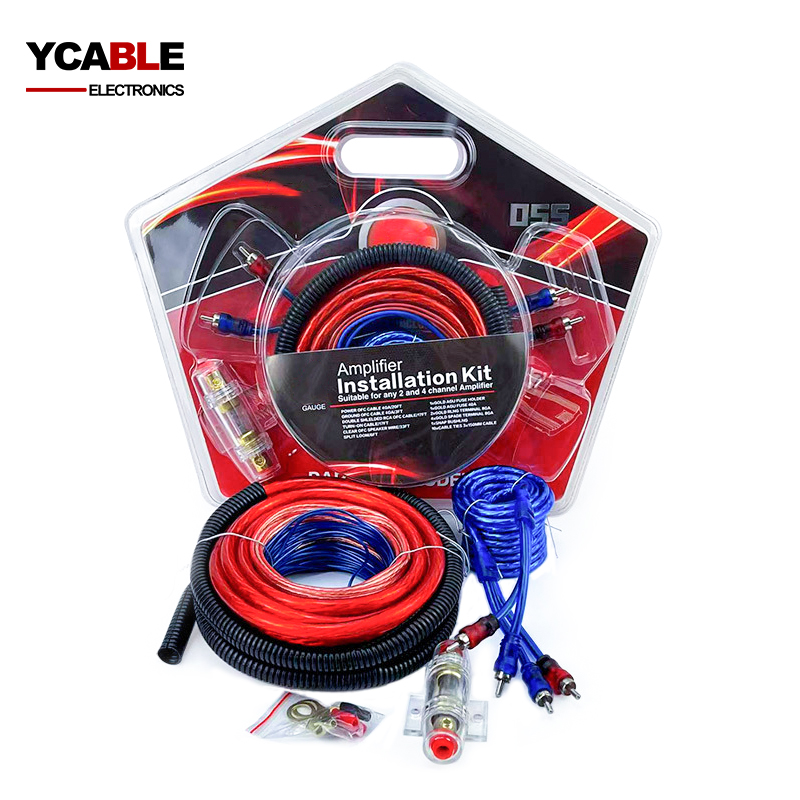


Categories
10 Gauge Amplifier Wiring Kit
| Physical/Electrical Specifications | |
| Name | 10 GA Amplifier Wiring Kits |
| Power Rating | MAX. 5000 Watts Peak |
| Insulation Resistance | 100 M Ohm x km at 20 °C |
| Operating Voltage, maximum | 300 V AC/DC Max |
| Transmission Standards | ISO/IEC |
| Elongation rate | >200% |
| Temperature Rating | Operating: -10 to +90 °C |
Description
What is car 10 Gauge Amplifier wiring kit?
Wiring an amplifier in a car is a task that goes beyond simply replacing speakers or a head unit, and familiarity with car audio basics can make the process much smoother.
Typically, car audio power amplifiers don't include the necessary wiring or cables. Therefore, you'll need to either gather the components individually or opt for a comprehensive car amp wiring kit.
There are five essential connections to establish when wiring an amp:
- Battery Power Cable: The power cable, usually ranging between 10 and 1/0 AWG in thickness, connects directly to the battery's positive terminal. This requires routing the cable through the car’s firewall. The specific gauge needed can often be found in the amplifier's manual.
- Ground Connection: The ground cable should match the gauge of the power cable but doesn't need to be as long.
- Remote Turn-On Wire: This thinner wire connects to the head unit and only needs to be long enough to bridge the distance from the head unit to the amplifier.
- Audio Input: Depending on the setup, this involves either speaker cable or a combination of RCA cables and speaker wire.
- Audio Output: Similar to audio input, the requirements depend on your specific system.
Acquiring the Right Components: Since most car amplifiers don't come with wiring, you'll likely need to purchase these separately or as part of an amp install kit. Start by consulting your amplifier's manual for the required gauge of power and ground cables. Measure the distances for cable runs from the battery to the amp and from the amp to the head unit to determine the length needed for the remote turn-on wire. Determine whether you need speaker wires or RCA cables based on your head unit's outputs and your amp's inputs.
Once you've listed all necessary cables and wires, the next step is purchasing them. Power cables and speaker wires are often sold in bulk, and RCA cables come in various lengths. Aim for shorter RCA cables to avoid unnecessary tangling.
Car Amp Wiring Kits: While amplifiers don't typically include wiring, car amp wiring kits provide a one-stop solution, containing nearly everything needed for DIY installation. These kits are usually categorized by the gauge of the power cables (e.g., 10 gauge, 8 gauge kits). It's crucial to choose a kit that matches your amp’s requirements in terms of power cable gauge, the number of channels, and whether RCA cables are necessary.
A basic car amp wiring kit should include:
- Power and ground cables
- Remote turn-on wire
- RCA patch cables or speaker wire
- In-line fuse and fuse holder
- Additionally, a comprehensive kit might offer:
- Flexible loom or wire ties
- Crimp connectors, solder, and heat shrink
- Wire termination hardware (such as spades, rings, etc.)
Selecting the right kit involves understanding your amplifier's needs and ensuring the kit matches these specifications.
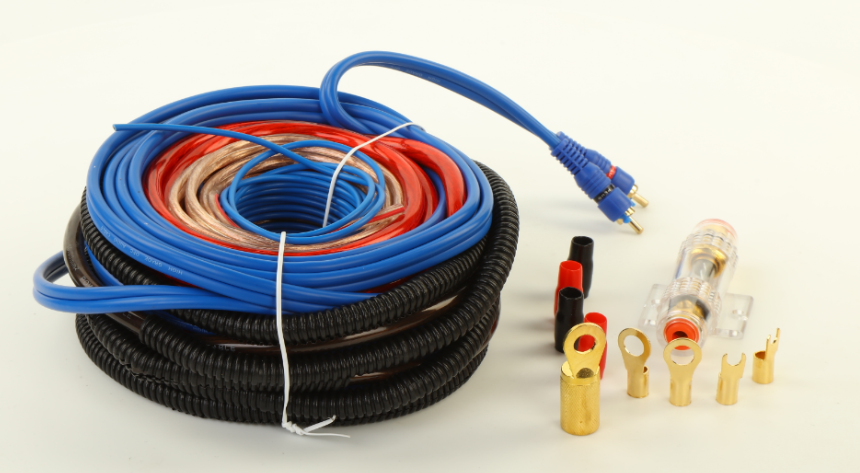
| 10 GA Ampfilier Wiring Kit | ||||||
| 10 GA | Description | Material | Color | Length | QTY | OEM |
| 1 | 10Ga transparent PVC power cable | OFC/CCA | Custom | 4.8-5.0M | 1PCS | yes |
| 2 | 10Ga transparent PVC ground cable | OFC/CCA | Custom | 0.9-1.0M | 1PCS | yes |
| 3 | 16Ga transparent PVC speaker cable | OFC/CCA | Custom | 5.0-10.0M | 1PCS | yes |
| 4 | 18Ga remote turn on PVC cable | OFC/CCA | Custom | 4.0-5.0M | 1PCS | yes |
| 5 | transparent RCA cable | OFC/CCS | Custom | 4.8-5.0M | 1PCS | yes |
| 6 | split loom tube | - | Custom | 1.8-2.0M | 1PCS | yes |
| 7 | AGU fuse holder | - | Transparent | 1PCS | yes | |
| 8 | AGU FUSE | - | According to the AMP | 60A-100A | 1PCS | yes |
| 9 | ring terminal | - | golden/silvery | 2PCS | yes | |
| 10 | spade terminal | - | golden/silvery | 1/2PCS | yes | |
| 11 | female/butt connectors | - | silvery | 4PCS/optional | yes | |
| 12 | grommet | - | Black | 3PCS/optional | yes | |
| 13 | screws | - | Black | 3PCS/optional | yes | |
| 14 | cable ties | - | Black | 10PCS/optional | yes | |
The Importance of a Car Audio Amplifier Fuse
A built-in fuse in a power amp primarily safeguards the amp. However, it doesn't extend its protection to the car's wiring system, particularly the amplifier's power wire. This wire is at risk of short-circuiting, potentially leading to extensive damage.
Without a fuse, a short-circuited power wire could result in a fire in the worst scenario.
Regular driving, even on smooth roads, can cause internal shifts and abrasions in your car's wiring over time. This is where a fuse becomes crucial in amp wiring.
Connecting an Amp to Power Safely
Avoid connecting your new amp directly to your car's existing fuse box or circuit. The amp usually requires more amperage than the current wiring can handle, posing a risk of severe failure, even with a modified fuse or a new slot in the fuse box.
A fuse is designed to fail under excess amperage or sudden spikes, breaking the circuit and preventing damage. If the fuse is absent or malfunctions, it can cause damage to other components or even an electrical fire.
Optimal Fuse Placement for Car Amps
Given the high amperage draw of car audio amplifiers, improper wiring can lead to power wire overload, shorts, and electrical fires. Running a separate power wire from the battery to the amp is advisable.
With multiple amps, a single power wire and a distribution block can be used, provided the wire can handle the combined current draw.
A failure in the amp or a short in the power cable can have disastrous consequences, including a fire or battery explosion. Therefore, installing an in-line fuse between the battery and the power cable is crucial. The fuse should be located at the battery end to provide protection along the entire cable length.
Choosing the Right Fuse Size
A fuse that's too small will blow during regular operation, while a too-large fuse increases the risk of component failure or fire.
If your amplifier has an internal fuse, choose an inline fuse slightly larger. For example, a 25- or 30-amp inline fuse for an amp with a 20-amp internal fuse.
For multiple amps, sum the internal fuse ratings to determine the appropriate inline fuse size, allowing for safe operation without danger.
In amplifiers without internal fuses, refer to the power ratings to select the correct fuse size. For multiple amps without built-in fuses, a fused distribution block is a good choice. It safeguards other amps and components in case of a failure.
Types of Fuses for Amplifiers
Amplifiers with internal fuses typically use automotive fuses, similar to those in other car audio components.
For inline fuses, blade fuses in a fuse holder connected to the amp power line are common. Alternatively, inline barrel fuses in a transparent or translucent holder can be used.
Ensure that the fuse holder's rating matches or exceeds the required fuse rating. For instance, don't use a 25-amp rated fuse holder for a 30-amp inline fuse.
